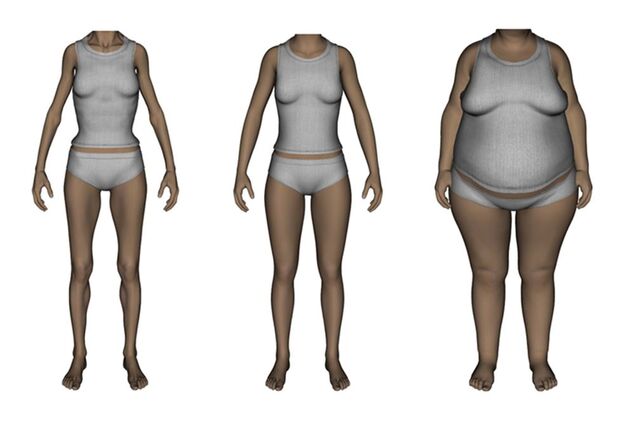Media
Images of Thin Models May Be Distorting Our Sense of Reality
A new study suggests media images could make average bodies appear overweight.
Posted August 15, 2022 Reviewed by Davia Sills
Key points
- We are flooded with images of very thin women in advertising and social media.
- This creates an unrealistic beauty ideal that many women feel guilty for not living up to.
- New research suggests that it may also change our perception of what a normal, healthy body weight actually is.

The ultra-thin female body ideal promoted so heavily in media images has long been linked with body dissatisfaction and eating disorder symptoms in women. One of the most widely researched theories of eating disorders argues that when we’re constantly presented with idealized images of very thin women, we internalize the body ideal they represent. In other words, we go from noticing the thinness of the women in these images to buying into the idea that ultra-thin bodies are ideal. From that perspective, it’s no wonder that so many women feel awful about their own bodies after seeing these types of media images.
If you believe ultra-thinness is ideal yet fall short of this standard, every reminder of the ideal can leave you feeling unsatisfied and vulnerable. Newly published research in the journal Psychological Science provides an explanation for why the ultra-thin ideal remains so powerful. In essence, the authors find that when we’re flooded with images of very thin women, our sense of which bodies are thin and which bodies are overweight* can actually shift.
There’s no shortage of evidence that media images featuring the ultra-thin body ideal for women are everywhere. Fashion models remain overwhelmingly thin, and some research suggests they’ve gotten thinner over time. Social media feeds are also replete with images promoting the thin body ideal. As women’s body sizes continue to increase in many areas around the world, the gap between the body size that’s idealized and the body size of most women continues to grow.
The authors of this new research ask an important question: Why does the ultra-thin body ideal continue to stick around when it makes so many women feel so awful? Their findings suggest an intriguing possibility. This flood of thin-ideal images may be systematically shifting what women perceive to be an “average-sized” body.
To explain this idea, consider the following hypothetical scenario: Let’s say you’re at a wedding, watching people on the dance floor. You can roughly divide the people you’re seeing into three categories: bad dancers, average dancers, and good dancers.
Now imagine the DJ plays a song that’s difficult to dance to, causing most of the bad dancers to leave the dance floor. Only the more serious dancers are willing to stick it out. Now take another look. You might notice that people you’d previously considered to be average dancers now start to look like bad dancers. The boundaries of your “good dancer” concept have shifted.
The researchers behind this new study used a similar approach to test whether an overwhelming amount of thin images might make bodies that previously looked “average” start to look “overweight” to women. In other words, if you see images of very thin female bodies all the time, could your idea of what an average-sized body looks like actually change?
To test this possibility, the researchers included over 400 young women (18-28 years old) in a study that involved determining whether a body presented on a computer screen was overweight or not. The women were presented with hundreds of images across several trials. That sounds like a lot, but the task was quick. Each image only appeared for half a second. When the image disappeared, the women in the study were prompted to press one key if they believed the body was overweight and a different key if they believed the body was not overweight. The images used were computer generated and showed women’s bodies from the neck down, wearing plain white underwear and a white tank top. They ranged from so thin they were emaciated to so heavy they were classified by the authors as “morbidly obese.” Here are three sample images used in the study, one from the very thin side of the scale, one from the middle portion, and one from the “overweight” side.

Participants were randomly assigned to one of two conditions. In the “stable prevalence” condition, women always saw an equal number of thin bodies and overweight bodies. In the “increasing prevalence” condition, the proportion of thin bodies presented increased as the trials progressed, up to the point where overweight bodies were rarely seen.
The results were clear. When women saw an increasing proportion of thin bodies, they became more likely to view average bodies as overweight.
What This Means
These findings have important implications for our media-saturated world. When we are surrounded by images of very thin women, our sense of reality can actually shift. We begin to see bodies that would otherwise seem “average” as “overweight.”
Imagine a teen girl who spends hours on Instagram consuming content by influencers who are overwhelmingly thin. In addition to feeling worse about her own body as a result of comparing herself to these images, she might walk away from her phone with a more distorted sense of the reality of women’s bodies. The more we consume thin-ideal imagery, the more we lose track of the broad diversity of women’s body shapes and sizes in the real world.

The results of this new research suggest that increasing the representation of a diverse array of body sizes in media imagery could help to shift perceptions in a healthy way, perhaps leading to more positive body image outcomes. This research is also a reminder of how important it is to curate your social media feed so that it leaves you more in touch with—and perhaps more appreciative of—what bodies actually look like.
*There are many good arguments about how to best label different sizes of bodies, but the authors of this research used the subjective term “overweight,” so I’ll stick with that for this article.




